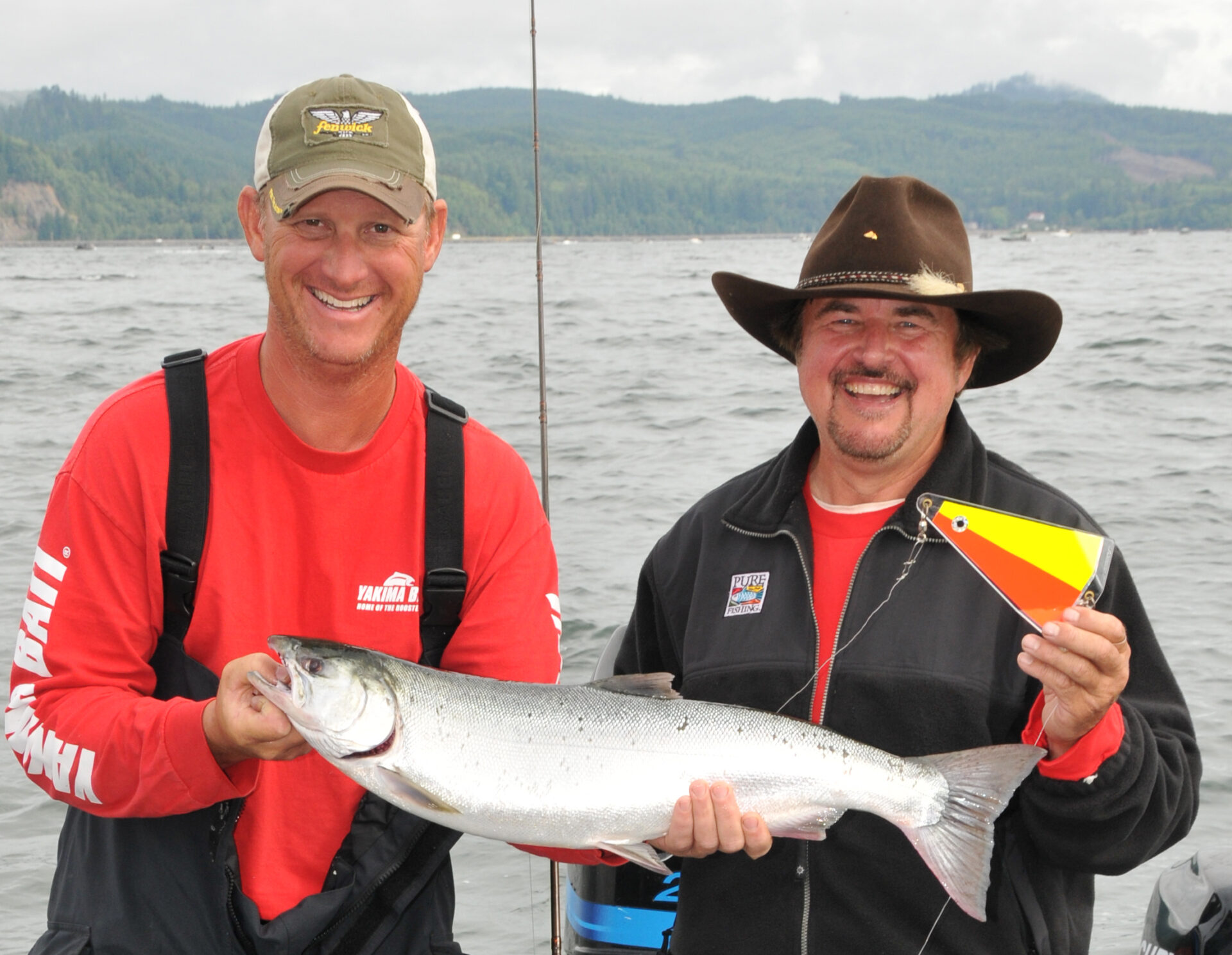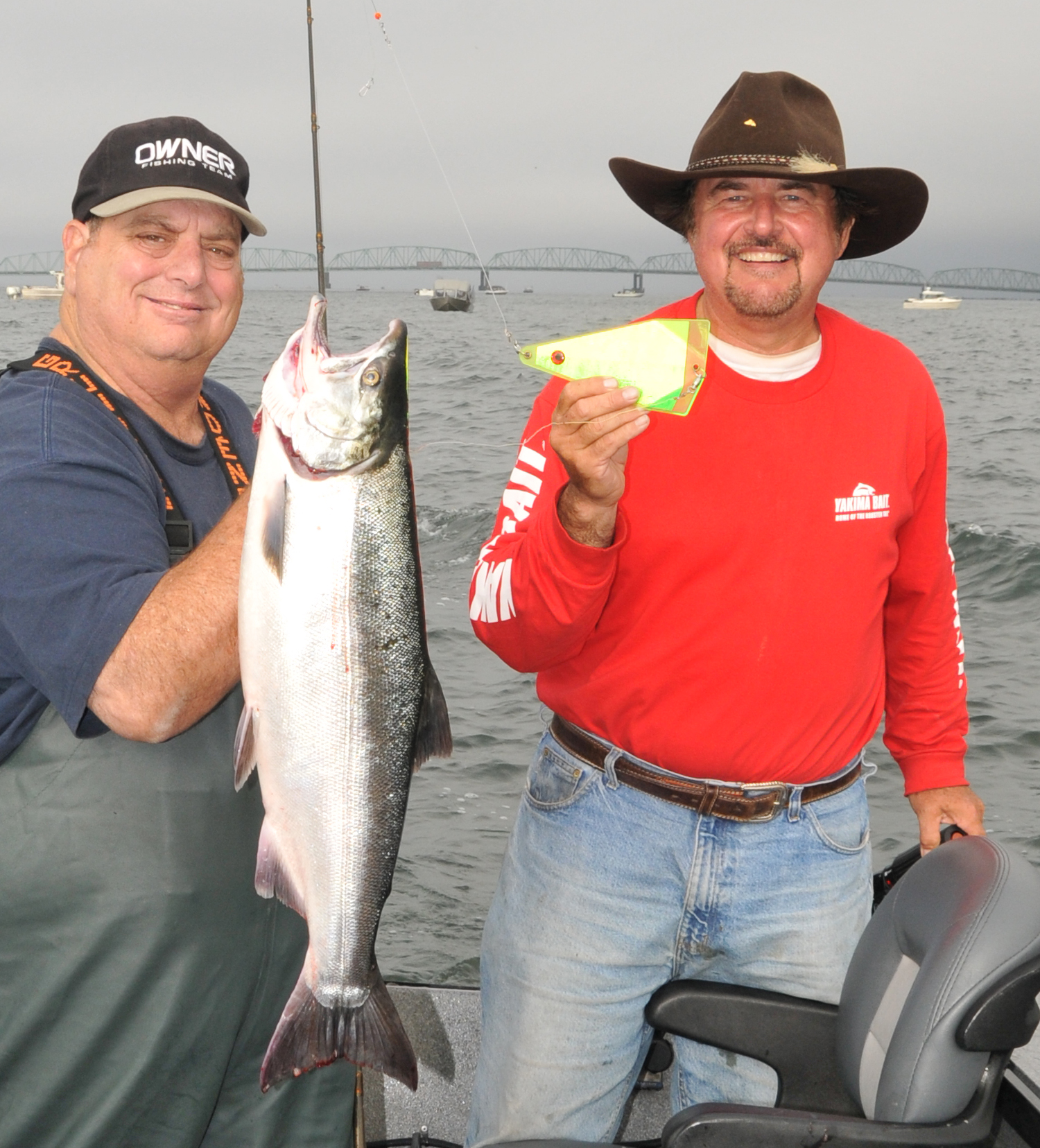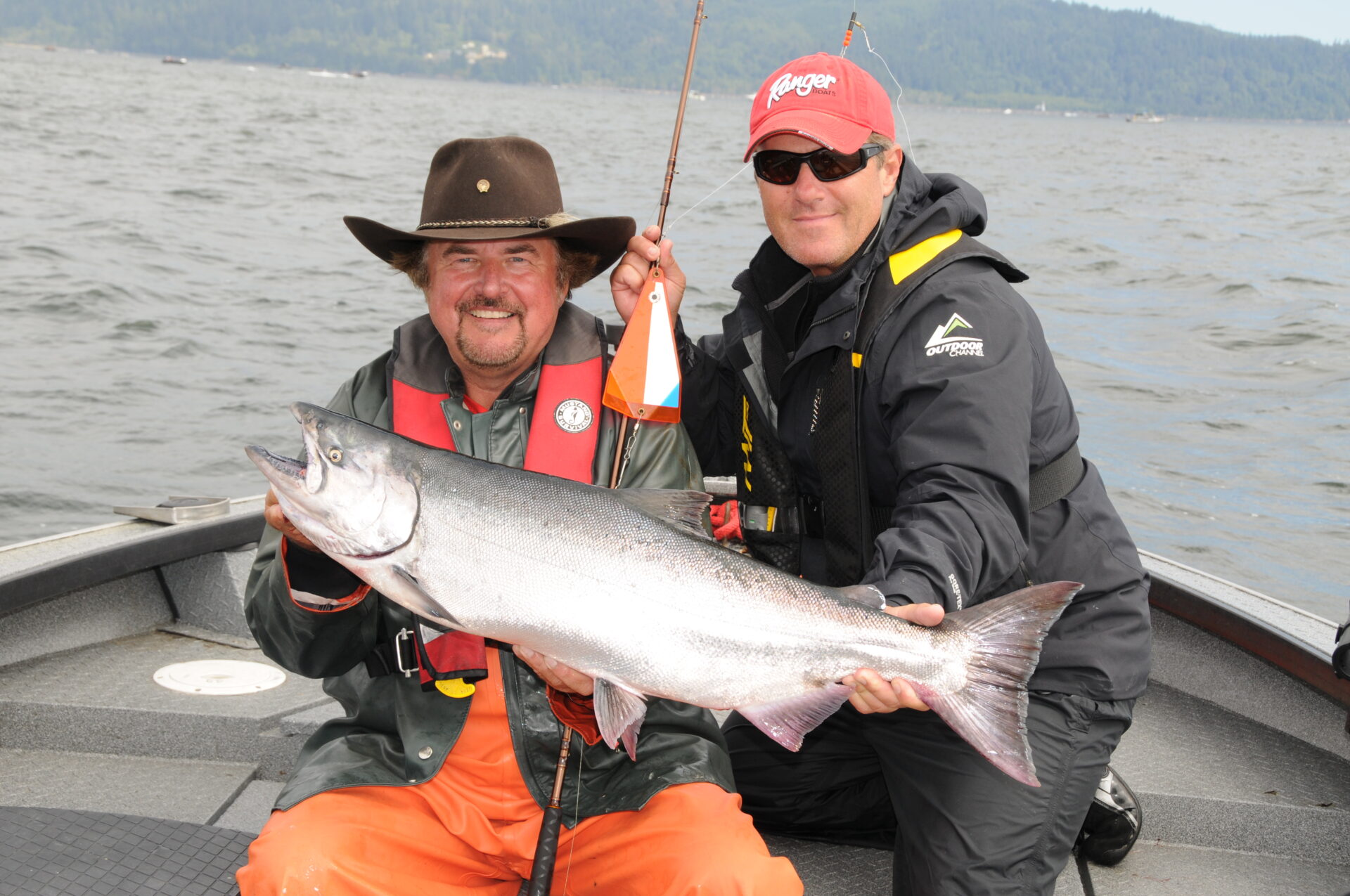Columbia River/Buoy 10 Tide Strategies
With a combined run of nearly a million chinook and coho salmon returning to the Columbia River mouth this August and September: forecast by state agencies to include 340,000 chinook and 600,000 coho, it might be time for you to plan a trip. And although the number of chinook returning will restrain fisheries targeting them, the giant coho return should be enough to keep the boat ramps and fish cleaning stations, at this popular sport fishery, busy.

When it comes to catching salmon, like many near saltwater fisheries, it’s all about the tides at Buoy 10. You see, each successive tide pushes more and more salmon into the estuary, which is the first place you can ambush fall salmon as they enter the Columbia River.
The salmon ride the incoming tide into the river like a surf boarder might a big wave, which means each tide, especially a big one, will carry with it large numbers of salmon all the way to and above the Astoria-Megler Bridge. To be successful is about understanding where this wave full of fish can be found and being there when they bite. It’s all about understanding the ever changing push-and-pull of water.
During times when tides are less dramatic (it’s true) the tides push fewer salmon not as far into the estuary. But if the lesser tides occur for a week or more the lean daily numbers can add up to big ones and offer quick limits fairly close to the mid-estuary access points like Hammond, Warrenton, Chinook and Ilwaco.
Because the area extending from Buoy 10 (the red channel marker that describes this fishery) to Tongue Point is 14 miles long and four to five miles wide most anglers locate the salmon by trolling. And the best time to troll, especially when tides are big, is mostly during the last half of the incoming and first half of the outgoing tide.

The fishing rods used at Buoy 10 are fairly stout and stiff enough to handle cannon-ball style sinkers that might vary in weight from four to 16 ounces. What most angers do is run heavier sinkers on their front rods, say 12 to 16 ounces, and lighter sinkers, 8 to 10 ounces, on lines trailing out the back of the boat. How much weight you use depends on how deep the salmon are running and whether or not you are trying to keep your gear at or near bottom. Keep in mind though that not all salmon are on the bottom as many will suspend at mid depth, especially when tides are flooding.
What many anglers do is run their front rods out 20 to 25 feet on their line counters and their back rods out far enough to occasionally hit bottom when trolling over water less than 30 feet in depth.
A popular rod series for fishing “Buoy 10” are the Berkley Air rod series that I helped the company design. Actions that work at Buoy 10 include the 7’9” HB (Heavy Bounce), 9’ XH (Extra Heavy), and 9’6” and 10’6” HH (Heavy Herring) models. The 7’9” HB is easier to stow than longer rods and perfect for fishing straight out behind your boat. The 9’XH is an overall favorite among many for its ability to handle big sinkers, while the 9’6” and 10’6” HH actions are handy when wanting to spread lines out to achieve a wider trolling swath. The HB and HH will handle weights to 12 ounces; while XH can easily handle 16 ounce sinkers. If you want the ultimate in stiffness with a land-them-quick action, it’s the rod action I use, consider the 8’ XHB (Extra Heavy Bounce) which will handle sinkers of 20 ounces or more.
Levelwind reels equipped with line counters are what everyone uses at Buoy 10, since you really need to know what depth you are trolling and be able to return to it reliably. And while I’ve used the Abu Garcia 5500/6500 line counter models for Buoy 10 salmon, I’m mostly using them when chasing spring chinook these days. For Buoy 10, it’s the Penn Warefare or Fathom II Line Counter reels in the 15 size that works best for me. And yes, these Penn models are available in right or left hand versions.
When it comes to fishing line, the majority of anglers employ high-tech braid. Most guides and anglers I know spool 50 or 65 pound test braid, which is way thinner than even 25-pound test monofilament and totally eliminates the thought of an unexpected break off. This is something that can happen when using monofilament fishing line, especially if it is been heavily used and on the reel for more than a year. However, if you prefer mono, some anglers do, I would suggest picking a tough one like Berkley Big Game in at least 25-pound test.

Like many having boats, I’ve usually got four friends with me when trolling Buoy 10, meaning we have five rods in the water. Although it varies depending on what the fish are biting, I generally run spinners on the two rods near the bow of the boat and herring or anchovy on the rods positioned out the stern. Make no mistake, spinners work at Buoy 10 and what you might discover, as we have, that the majority of big chinook seem to come on the spinners. The idea behind running bait on the back rods is to encourage salmon that passed up on the spinners or arrived late to all the attraction produced by our flashers to bite.
As for my rod, I once ran it between the two stern rods and rigged with the same amount of weigh as the other back rods. Doing this meant my rod was mostly in-line with the others and as such rarely got bit as fish attracted to all the flash produced by our Fish Flash got to the side rods first. What changed the success of my center rod was when I started trailing my outfit, often rigged with a Mulkey spinner in combination with a four ounce sinker, behind the boat 70 to 100 feet or more. What this often means is that my sinker might bounce bottom when trolling over 20 feet of water or less but otherwise my outfit is suspended somewhere at mid-depth. There is just something about having a lure trailing out behind the other gear that the fish sometimes respond to in a big way.
